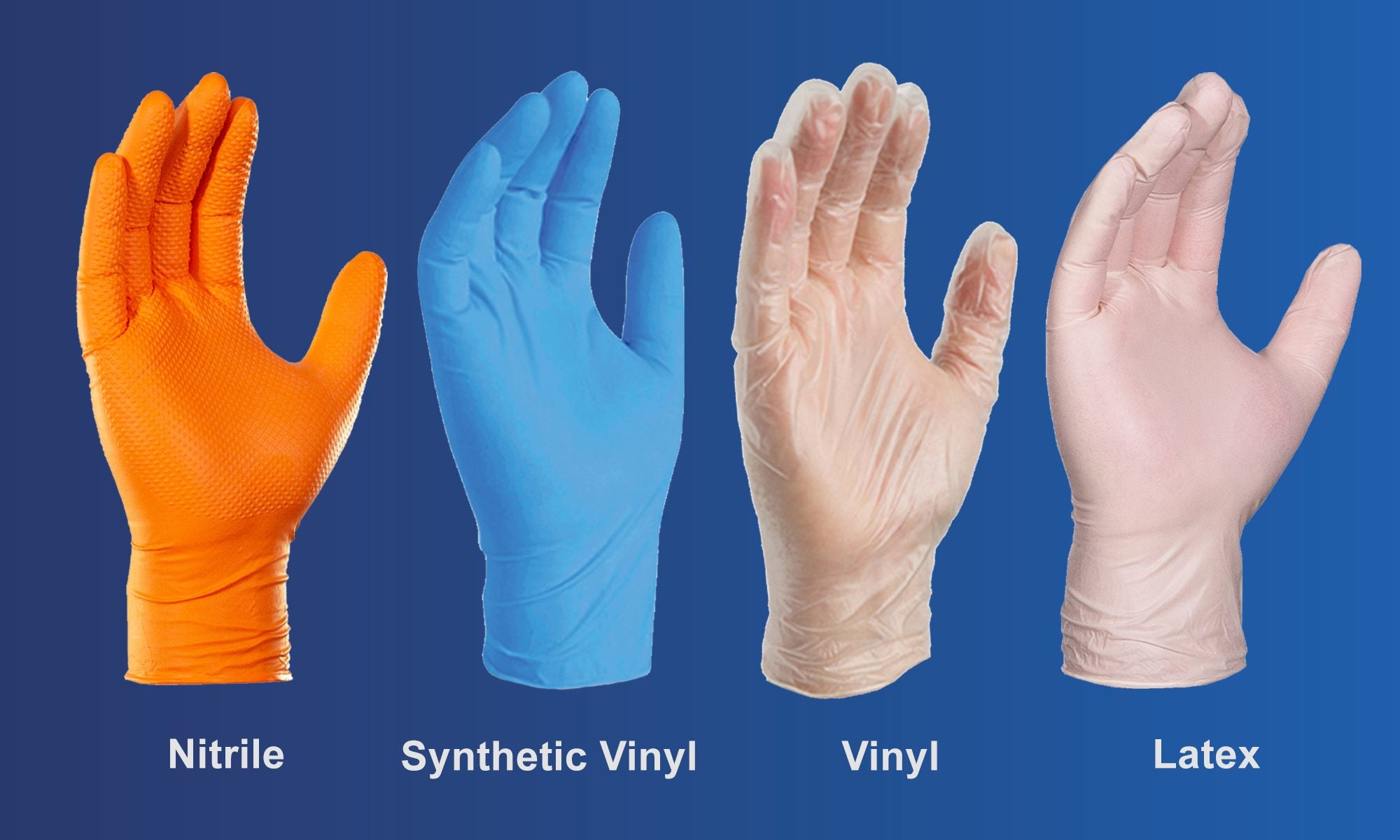No Products in the Cart

Disposable gloves are essential in various industries to ensure safety and hygiene. Depending on the material, latex gloves, nitrile gloves, and vinyl gloves offer different advantages and are suitable for different applications. Knowing its characteristics can help you choose the most appropriate type for each need.
Latex Gloves: Sensitivity and Comfort
Latex gloves stand out for their high elasticity and tactile sensitivity, making them ideal for medical procedures and tasks that require precision. However, it is important to consider latex allergies, a significant limitation to its use.
Nitrile gloves are chemical and puncture resistant, making them suitable for handling hazardous substances. Their ability to prevent allergic reactions makes them an excellent alternative to latex, especially in medical and laboratory settings.
Vinyl gloves offer an economical solution for low-risk tasks, where tactile sensitivity and chemical resistance are not a priority. They are ideal for general cleaning and handling non-greasy foods.
The most commonly used disposable glove is usually nitrile., mainly due to its versatility, resistance to chemicals and punctures, and because it is a safe option for people with latex allergies.
These disposable gloves offer a good combination of tactile sensitivity and protection, making them suitable for a wide range of industries, including medical, chemical, and food processing.
Its popularity has grown especially due to the growing concern about latex allergies and for offering a reliable barrier of protection against various types of exposures.
The choice between latex gloves, nitrile gloves, and vinyl gloves depends on the specific need for sensitivity, chemical resistance and allergic considerations. Visiting https://cetrixstore.com/ will allow users to explore a wide range of options and find the right disposable glove for their industry.
Although allergies to nitrile are much less common than latex, some people may experience reactions. If you suspect an allergy, consult a health professional.
Yes, for non-fatty foods. For handling greasy foods, disposable gloves more resistant to fats and oils, such as nitrile, are recommended.
A well-fitting glove should fit snugly without limiting movement. Most manufacturers offer a size guide; Please measure the circumference of your hand to find the right size.
Remember that a proper fit is key to maintaining tactile sensitivity and comfort during use.
Images from https://149902194.v2.pressablecdn.com/wp-content/uploads/2021/05/blog-post-6.1-2000x2000-1-2000x1200.jpg